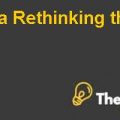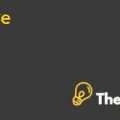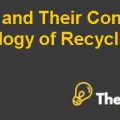
a. - Proposed methods of data analysis - (Quantitative Data: hypothesis testing e.g. T-tests) or (Qualitative Data) - you must justify why you choose method
The suitable research method for data analysis extracted through the literature review is correlation analysis, T-tests and multiple regression analysis. All three are used because of the quantitative nature of the study. As it requires the construction of a turnover prediction model, it is proposed to quantify the results that are gathered. As the research identifies independent and dependent variables therefore; regression and correlation analysis is best suited for this study as they identify the relationship between the two variables.
However, any causal relationships can’t be hold through these two analyses as they depict the extent of association between the variables (dependent & independent); where, correlation taps any linear relationship between the variables. T-test is employed to tap whether or not the population mean differs between the two set of populations. Further, as the sample size taken is large to improve external validity of the study; therefore the commonly used test is T-test. As specific variables are taken into study, and the research is intended to measure their impact on the turnover intention, hence; a qualitative study is not conducted, which may produce other variables and deviate the study from its core objectives. In analysing the collected data in this study, Koh & Goh (1995) adopted explanatory statistics, and performed BI-VARIATE tests, in order to examine, if turnover intentions were significant to the demographic variables or job-related variables. The explanatory statistics employed are used to determine the means and frequencies of distribution of the variables investigated.
b. - Proposed research site (Public area - anonymous survey, or online survey site) you must justify why you choose this method
The proposed research site is an office area, in particular banks. As this is an organizational research, therefore; the questionnaire will be given to twenty nine employees from each of the eleven banks. As the research intends to measure job attitude (turnover intention), it is best to conduct survey in-person rather online as online survey lacks in its ability to measure non-verbal cues that can offer important insights into the study.
c. - Sampling method, unit, size
The sampling method used is probability sampling versus non-probability sampling. Further, the participants chosen for the research are those that are employed at non-managerial posts (clerical, secretarial, frontline or general administrative workers) from the banking industry. The number of participants involved is mentioned below in the third section. The research methodology used is also justified in each section.
1. Sampling methods- probability or non-probability
The sampling method employed is random sampling in which each participant has an equal chance of being selected and each member has a chance of being composed in the sample. It is used when the researcher has little knowledge about the participants and there is no limitation on gauging attitude of specific sample in the population Koh & Goh’s (1995). Further, it is the easiest of all sampling methods and equips the researcher with standard formulas to determine the sample size, plus the estimates and is easy to grasp.
The non-probability sampling is although less costly, but as the literature review suggests the use of random sampling which is the reason for selecting it as a sampling method. Non-probability sampling is used when the researcher has limited access to the population in large and from whom the sample is difficult to extract. Non-probability sampling is also used when there is purposive personal judgment on the part of researcher. As this study is not a qualitative one, consequently the use of non-probability sampling is not devised.
2. Sampling unit - who are the participants
The banking Industry is seen to give lower salaries and no perks to their non managerial staff, this lead companies to incur high costs for recruitment and training. These recurring expenses occur because budget hotels do not train their staff well and do not align their interests with the employees (non-managerial). They shouldn’t take their human capital for granted and must work to promote coherence in the work place. For these very reason the employee retention policies need to be employed and employees, who are more specifically (non-managerial) employees. In addition, interests must be served so that they can find the work place as an opportunity to grow their career.
As the sample includes banks, as a result random sampling of the eleven banks will be conducted. Out of these 11 banks, twenty nine people will be surveyed from each. These people will be chosen out from the non-managerial staff including: clerical, secretarial, frontline or general administrative workers................................
This is just a sample partial case solution. Please place the order on the website to order your own originally done case solution.













